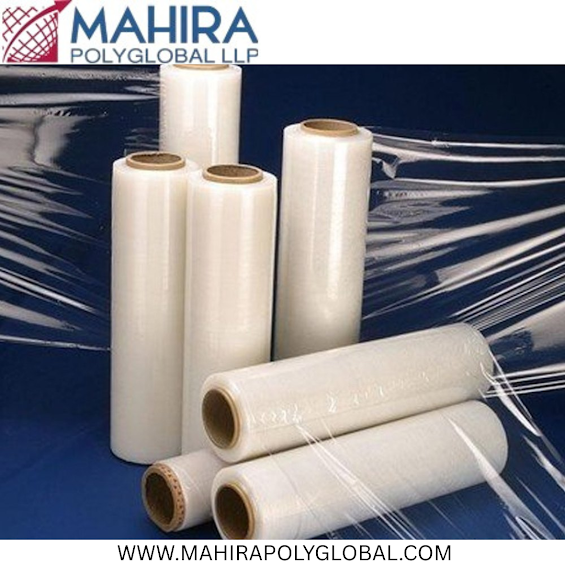LDPE Film: Flexible, Durable, and Sustainable Packaging Solutions
In the huge and sometimes developed landscape with modern packaging, a material consistently stands out for its remarkable versatility and permanent utility: low -density polyethylene (LDPE). Away from a pure product, the LDPE movie is a sophisticated solution, a will for material science that balances flexibility, durability and fast, stability. Its universal appearance speaks of its inevitable role, against protecting delicate electronics to pack industrial products, its inevitable role in trade and daily life. It's not just about wrapping; It is a way with security, protection and presentation of products that are both effective and effective.
The Genesis of Flexibility: What Makes LDPE Unique?
The low density, as the name suggests, originates from its molecular structure with high branches. Unlike the high class cover (HDPE), these branches prevent polymer chains from packing closely, resulting in a material that is naturally more flexible, soft and excellent clarity. This structural difference is the basis for a wide range of applications. Think about giving the rest of a bread bag or the mild feeling of dry clining of cover-these are the direct consequences of the unique molecular architecture of Shrink film in India. This underlying flexibility also becomes a material that is less prone to cracks and demolition, and offers significant levels of packaging that eliminates handling and transport.
Durability in Practice: More Than Just a Thin Layer
While the "low grain" can add pictures of delicacy, the MAHIRA POLYGLOBAL LLP is surprisingly strong. The strength is not in hardness, but is in the ability to absorb the effect and oppose the puncture. This feature makes it an ideal option for packaging applications where products require protection against external elements, moisture and pollution. From agricultural films to heavy industrial lining, LDP's cruelty on its often measures. In addition, the excellent barrier to water vapor is important to improve durability, deteriorate and maintain the integrity of the product. This balance between flexibility and strength is an important discrimination, so it can do the tasks that other more stiff materials can not just do.
The Indian Landscape: Shrink Film and Beyond
Demand for skilled and safe packaging solutions has promoted significant growth in the Indian market, especially related to the shrinking film. Pant film in India is a rapidly expanded area, inspired by the need for safe packaging, tampering certificates and increased product presentation in different industries. Whether it is to unite the drinking bottles, protect electronic components or packaging foods, the benefits of shrinking rapping are undisputed. Especially a LDPE -shrinking film is strongly in demand because of its better shrink characteristics, clarity and strength. When the heat is applied, the film corresponds to the size of the product, which causes a safe and aesthetically comfortable package.
Sustainability: A Growing Focus for LDPE
In an era defined by environmental awareness, the stability of the packaging material is during emergency examination. Downed by fossil fuels, LDPE is naturally recycled. The challenge lies in the establishment of strong collection and recycling infrastructure. Many initiatives are now focused on increasing the degree of recycling after the conjuns of Shrink film roll by converting it into new products such as total wood, refusing bags and even new packaging materials. In addition, progress with production processes becomes thinner, yet equally strong films, which reduces general physical use. The future of the LDPE movie is closely linked to this stability effort, with a strong emphasis on the closed loop system and with the development of biobased or biodegradable alternatives.
Versatility Across Industries: A Packaging Chameleon
The adaptability of the LDPE movie allows it to serve an incredibly diverse selection of industries. In the food sector, it is used for everything from production bags to frozen food packaging, which benefits from food -safe properties and ability to maintain freshness. The construction industry uses vigorous Gauge LDPE as steam barriers and temporary coatings. The medical and pharmaceutical industry depends on the sterile character of LDPE for packaging sensitive equipment and medicines. Retail where clear, attractive packaging is important, requires strong security against industrial applications, LDPE movie turns out to be worth it.
Conclusion
The LDPE shrink film often seen as a common content, is actually a miracle of physics, offering an unmatched combination of a promising passage towards flexibility, durability and more stability. From delicate food packaging to strong industrial coating, the wide selection, emphasizes the indispensable role of modern trade. The focus on increasing its environmental footprint through better recycling and responsible production practices ensures continuous relevance. When industries develop and shift consumer demand, LDPE films, with their adaptable nature, are undoubtedly ahead of innovative packaging solutions worldwide.
Frequently Asked Questions
Question: Is LDPE movie suitable for food packaging and pose any health risk?
A: It is a chemically passive material, which means that it does not react with food or washed off harmful substances. Many LDPE movies are designed specifically to meet the strict rules of food quality, ensuring consumer safety.
Question: How does LDPE movie work, and what are its primary benefits for packaging?
A: LDPE Shirink movie works closely by contracting around a product when the heat is applied and becomes a safe and protective barrier. Its primary benefits include providing excellent product protection against dust, moisture and tampering, increasing the product presentation through its clear and analog nature, and tricuting many objects for easy handling and shipping at the same time.
Question: Can the LDPE movie be recycled, and what is the general end use for recycled LDPE?
A: Yes, the LDPE movie is recycled, although recycling often requires special functions due to its flexible nature. Common final use for recycled LDPE includes plastic wood, park benches, agricultural pipes, refuses bags and even the construction of any food packaging materials, which contributes to a more circular economy.
Question: Who is the largest manufacturer of LDPE Film?



Comments
Post a Comment